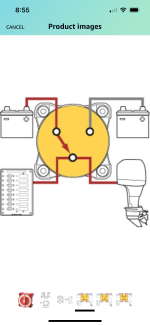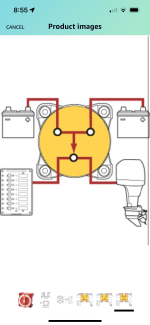RKRUGER
Adventurer- Toyota Nut
Guess I want to do something others think is crazy, but I have been struggling to leverage the battery in the front of my 06 Chaser trailer in a way to power my fridge while at camp, charge while underway, be charged with a solar blanket while at camp, and generally be a "remote" dual battery set up. Simple put, I want to retain the ARB 50 in the 100, and be able to disconnect the starting battery from the load circuit while overnight. All loads originate in the truck, second battery sits in the trailer.
The challenge is to charge the AGM in the tongue box while underway thru the use of a large set of cables w/ Anderson plug at the hitch and then a step up in changing voltage through a DC-DC charger, tho I haven't determined an efficient way of getting that current back to the truck without running a second set of cables. Wire size from the breaker to the fridge is 4AWG (red wire) and detailed in the Cruiser thread here.
Can I use the same wires to charge the trailer through a DC-DC charger that I then route back to the front of the truck and power my fuse box? Or will the DC-DC charger prevent that?
I imagine this will get only a few less opinions that an All Terrain tire thread!

The challenge is to charge the AGM in the tongue box while underway thru the use of a large set of cables w/ Anderson plug at the hitch and then a step up in changing voltage through a DC-DC charger, tho I haven't determined an efficient way of getting that current back to the truck without running a second set of cables. Wire size from the breaker to the fridge is 4AWG (red wire) and detailed in the Cruiser thread here.
Can I use the same wires to charge the trailer through a DC-DC charger that I then route back to the front of the truck and power my fuse box? Or will the DC-DC charger prevent that?
I imagine this will get only a few less opinions that an All Terrain tire thread!





